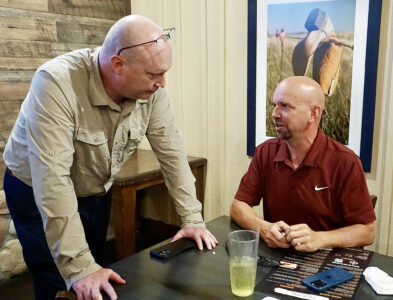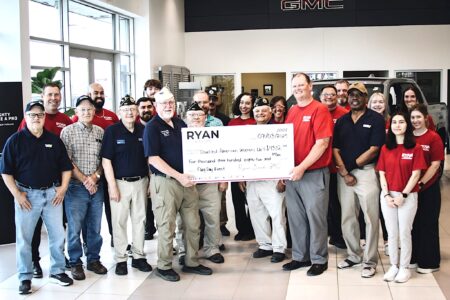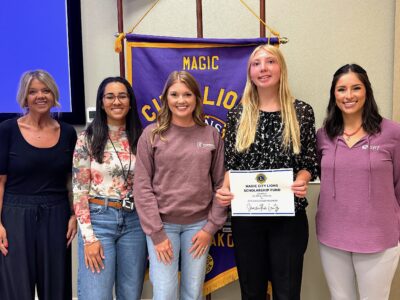Saving the giraffes
Visitors to Minot’s Roosevelt Park Zoo can help the local giraffes while helping giraffes on the other side of the world.
The Minot zoo is in partnership with Care for Karamoja, a conservation project to help protect giraffes on the brink of extinction as well as the native people living in Uganda.
Sheri Horiszny, director of Animal Care for the Santa Barbara (Calif.) Zoo, was in Minot this week to meet with Minot zoo personnel and speak at a public meeting about the project.
Horiszny said she got the idea to start Care for Karamoja in spring 2012 when she was at a conference and heard about the population decline of giraffes how small the subspecies numbers are and that people are poaching and eating giraffes.
At that same conference, she said there was hope for the Rothschild’s giraffes when representatives from the Uganda Wildlife Education Centre talked about these animals in Uganda. The representatives had come up with an idea to reduce poaching pressure by starting an ostrich farming project in the northeast corner of Uganda. “It’s the poorest part of Uganda, so there’s about 785,000 food insecure people in this region, which is Karamoja,” Horiszny said.
The following summer, Allison Suda, a zookeeper at the Minot zoo, heard Horiszny speak at a session about ungulates (hoofed mammals) at the Association of Zoos and Aquariums meeting in Texas. She brought the idea back to Minot for the zoo to support the conservation project.
“This great little zoo has been the most supportive zoo in the country,” said Horiszny.
Horiszny said only about 86,000 giraffes remain in all of Africa compared to about 450,000 elephants that exist.
Of the Rothschild’s giraffes, on which the conversation project mainly focuses, there are only about 1,300, Horiszny said.
The Minot zoo has the reticulated giraffe. She said there are about 8,600 reticulated giraffes left in Africa.
“What has happened is they are all becoming isolated pockets because of population growth and as humans cultivate more land, the giraffes have smaller and smaller spaces and corridors are getting cut off so we’re ending up with isolated populations within Africa,” Horiszny said. “Everyone thought giraffes were just fine in Africa until not that many years ago. The populations have declined about 40 percent over the last 15 years, and they’re not doing as well as we thought. They’re surprisingly in trouble.” She said the giraffes extinction issue is sometimes referred to recently as the silent extinction.
At that same conference where she learned about the plight of the giraffes, Horiszny said there also was hope for the Rothschild’s giraffes when representatives from the Uganda Wildlife Education Centre talked about these giraffes in Uganda. They had come up with an idea to reduce poaching pressure by starting an ostrich farming project in the northeast corner of Uganda. “It’s the poorest part of Uganda, so there’s about 785,000 food insecure people in this region which is Karamoja,” Horiszny said.
Horiszny said the giraffe and the ostrich are the most sought after wildlife on the black market in that region and are poached for meat and feathers. The wildlife group thought if they could incubate ostrich eggs, hatch them out and identify some local people to show them how to farm the ostrich, they could create another revenue stream, another protein source and reduce poaching pressure because people would have something else to eat, and something else to do and sell.
“All they needed to start this project was an incubator,” Horiszny said. She thought she could get an incubator to send to Uganda. But what she didn’t know at the time was how big such an incubator was about the size of a “fat squat refrigerator” and weighing about 750 pounds each.
It took a year and a half and about $30,000 for her to finally get an incubator to Uganda. She intended to just do this one thing, she said. There were a number of issues once the incubator was there and initially only a couple chicks hatched. But, she said, the people of that particular area are interested in ostrich farming.
Initially, Horiszny thought sending an incubator to Uganda would be the end of her efforts, but it wasn’t.
Horiszny has since visited Uganda where she’s met the people and seen the giraffes in the wild. “Basically, I’m passionate about this region of the planet and want to keep trying to help it and it’s all about sustainability on the people side helping them live more sustainably, helping them deal with food and security and their lack of resources.”
She partnered with other organizations to conduct a census of the giraffes last summer.
She said there’s also huge need for conservation education. “One of the things we want to do is get a small bus and start running trips for school kids into the park (in that area of Uganda),” she said. “We need to build an appreciation for all wildlife, not just giraffes in the park.”
To date, Roosevelt Park Zoo has provided about $22,000 to the Care for Karamoja project which helps with various project efforts.
The money came from the giraffe feeding stations at the Minot zoo. The feeding stations are open twice a day during the zoo’s season. People can buy food for the giraffes and with the assistance of zoo staff can feed the animals.
Jill McDonald, Minot Zoo Crew executive director, said any time visitors come to the Minot zoo for the giraffe feedings, a portion of the proceeds remains at the local zoo for such things as enrichment items for the giraffes. “The other portion of it goes to Care for Karamojos so we know that we’re taking care of our giraffes here and we’re doing our best to make an impact to make sure that the next generation gets to see giraffes because as quickly as they’re dwindling is very scary,” McDonald said.
“We’re really in a sort of epic time right now and it could be that they’ll be like mammoths, mastodons and dinosaurs. Our kids will have to wonder what it was like to see them wandering in a savanna,” Horiszny said.
Horiszny’s Care for Karamojos project works with a number of other zoos besides the Minot zoo. The others include zoos in Omaha, Neb., Milwaukee, Detroit, Berlin, Germany, as well as the California Academy of Sciences in San Francisco, Six Flags Discovery Kingdom of San Francisco/Sacramento and The Colyer Institute, a center for the study of oral disease and nutrition in exotic animals located in San Diego.
Care for Karamojos recently became an official nonprofit organization called Giraffe Conservation Alliance. Horiszny said the nonprofit status is beneficial for many organizations to contribute to the project.
What can people in this area do for the project?
“They should come to the zoo and feed the giraffes support the zoo giraffes and support the zoo is the best way, and talk about it with people,” Horiszny said. “Each of us can make a difference and the difference doesn’t have to be for giraffes. If each person recognizes they can take action, they will make a difference for the planet. That’s really important,” she said.



